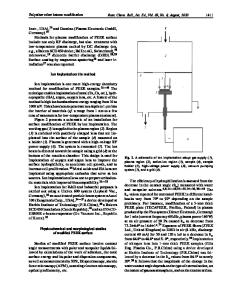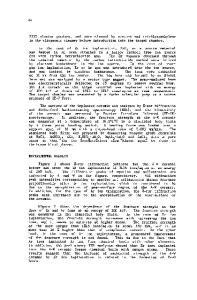Inner surface reaction and modification of titanium alloy by a new plasma source ion implantation method
- PDF / 176,339 Bytes
- 5 Pages / 612 x 792 pts (letter) Page_size
- 81 Downloads / 439 Views
MATERIALS RESEARCH
Welcome
Comments
Help
Inner surface reaction and modification of titanium alloy by a new plasma source ion implantation method Mu Sun,a) Kan Xie, and Si-ze Yang State Key Laboratory of Surface Physics, Institute of Physics, Chinese Academy of Sciences, P.O. Box 603-8, Beijing 100080, People’s Republic of China (Received 24 September 1997; accepted 10 November 1997)
The inner surface of a cylindrical titanium alloy target was successfully implanted with nitrogen ion using a new plasma source ion implantation method. By means of x-ray photoelectron spectroscopy and x-ray diffraction, the reactive phases and their chemical state in the implanted layer were investigated. In order to characterize the modification effect and its uniformity, the retained dose and the microhardness at seven different positions along the axis on the inner surface of the cylindrical target were measured, respectively. The experimental results show that a TiN reactive phase was formed in the implanted layer, which contributed to the improvement of inner surface microhardness. The root-mean-square deviations of retained dose and microhardness measured along the axis of the target are less than 9% and 4%, respectively, which are well within an acceptable tolerance range for metallic applications of ion implantation.
I. INTRODUCTION
Plasma source ion implantation (PSII), a new, innovative, and cost-effective process, is being developed as an alternative to beam-line accelerator technology for surface modification of materials.1–5 In the PSII process, targets to be implanted are immersed directly in a plasma source generated in the vacuum chamber, and a series of negative high voltage pulses are applied to the target. A plasma sheath is formed between the plasma and the target; the resulting electric field accelerates the plasma ions to a high energy toward the target, and makes these ions implanted into the target surface. Compared with conventional implantation the main advantages of PSII are as follows: (i) elimination of need for target manipulation and beam rastering; (ii) elimination of target masking requirement; (iii) greater production throughput, specially for large targets; (iv) smaller facility, less expensive, and simpler to maintain and operate. In spite of these advantages, however, the present PSII technique is suitable only for implantation of the outer surface or exposed areas of targets. It is quite limited or even impossible for inner surface implantation of targets. In PSII, plasma is generated in a vacuum chamber from working gas ionization caused by primary electrons, and it is hard for primary electrons to get into a cylindrical target under filament discharge bias applied between filament and vacuum chamber wall. So plasma density inside the target is much less than that one outside the target and is not uniform. Besides, when a negative high voltage is applied to the target,
there is almost no electric field inside the target with the exception of the regions near target sides. Therefore, it is
Data Loading...










